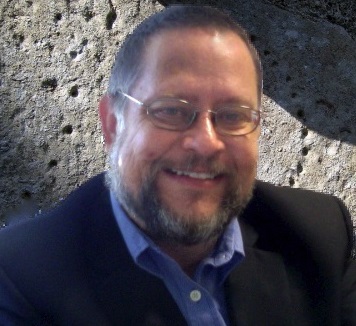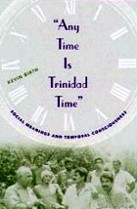 Kevin Birth
Kevin Birth


2016. Calendar Time, Cultural Sensibilities, and Strategies of Persuasion. in "Time, Temporality, and Global Politics". E-International Relations. (DOWNLOAD PDF)
2014. The Remarkable Clocks of the Magdalen Chapel. The Bulwark: The Magazine of the Scottish Reformation Society 4(4):14-17.
2014. Non-clocklike Features of Psychological Timing and Alternatives to the Clock Metaphor. Timing and Time Perception 2(3):312-324.
2014. "The Vindolanda Timepiece: Time and Calendar Reckoning in Roman Britain". Oxford Journal of Archaeology 33(4):395-411.
2014. Breguet’s Decimal Clock: A Masterpiece from the Enlightenment. Frick Collection Members’ Magazine, Winter 10-11.
2013. The Princess and the Pea: Research Strategies for the Study of the Mediation of Timescales by Artifacts. In Requirements for UTC and Civil Timekeeping on Earth, American Astronautical Society, Science and Technology Series, volume 115, pp. 191-204.
2013. Zmanim, Salat, Jyotish and UTC: The Articulation of Religious Times and the Global Timescale. In Requirements for UTC and Civil Timekeeping on Earth, American Astronautical Society, Science and Technology Series, volume 115, pp. 209-228.
2013. Calendars: Representational Homogeneity and Heterogeneous Temporality. Time and Society 22(2): 216-236.
2011. The Regular Sound of the Cock: Context-Dependent Time Reckoning in the Middle Ages. Kronoscope 11(1-2): 125-144.
2011. “Signs and Wonders: The Uncanny Verum and the Anthropological Illusion” in David Lipset and Paul Roscoe (eds.) Echoes of the Tambaran: Masculinity, History and the Subject in the Work of Donald F. Tuzin. pp. 117-136. Canberra: Australian National University Press.
2008. The Creation of Coevalness and the Danger of Homochronism, Journal of the Royal Anthropological Institute (N.S.) 14(1): 3-20. Also, “Reply to Fabian,” Journal of the Royal Anthropological Institute 14(3): 665.
2006. Time and the Biological Consequences of Globalization. Current Anthropology 48(2): 215-236. [Download PDF]
2006. What is Your Mission Here? A Trinidadian Perspective on Visits from the “Church of Disneyworld.” Missiology 34(4): 497-508.
2006. Més que
una pura succession: les alters dimensions del Temps [More than Pure
Succession: the other dimensions of time]. Revista d’etnologia de Catalunya 28:
20-27.
2006. Past Times: Temporal Structure of History and Memory. Ethos 34(2): 192-210.
2005. Time and Consciousness. Companion to Psychological Anthropology. Robert Edgerton and Conerly Casey, eds. Pp. 17-29. Oxford: Blackwell Publishers
2004.
Finding Time. Field Methods
16(1): 70-84.
2001. Sitting There: Discourses of the Embodiment of Agency, Belonging, and Deference in the Classroom. Journal of Mundane Behavior 2(2).
1997.
Most of Us are Family Some of the Time: Inter-racial unions and Trans-racial
kinship in Eastern Trinidad. American Ethnologist 24(3):585-601.
1996.
Trinidadian Times: Temporal Dependency and Temporal Flexibility on the Margins
of Industrial Capitalism. Anthropological Quarterly 69(2):79-89.
1995. Putting
Romance into Systems of Sexuality: Changing Smart Rules in a Trinidadian
Village (with Morris Freilich). Romantic Love.William R.
Jankowiak, ed. pp. 262-276.
New York: Columbia University Press.
1995. The
Ethnic Ambiguities of Getting Married: The Official Pronouncements, Local
Interpretations, and Personal Experiences of Trinidadian Hindu Indians. International Journal of Comparative Race
and Ethnic Studies 2(2):80-91.
1994.
British Anthropology and Psychoanalysis Before World War II: The Evolution of
Asserted Irrelevance. Canberra Anthropology 17(1):53-69.
1994
Bakrnal: Coup, Carnival, and Calypso in Trinidad. Ethnology 33(2):165-177.
1990.
Reading and the Righting of Writing Ethnography. American Ethnologist 17(3): 549-557.
2012. Objects of Time: How Things Shape Temporality. New York: Palgrave Macmillan.
2008. Bacchanalian Sentiments: Musical Experiences and Political Counterparts in Trinidad. Duke University Press.
1999.
Any Time is Trinidad Time.
Gainesville: University Press of Florida.
2014. Failed, Forgotten, Discarded, or Marginalized. United
States Naval Observatory, Washington, D.C.
2014. Sediments of Timekeeping: A Walkshop on Recognizing Past Time
Reckoning Techniques in Edinburgh, Scotland. The Temporal Design Workshop,
School of Design Infomatics, University of Edinburgh.